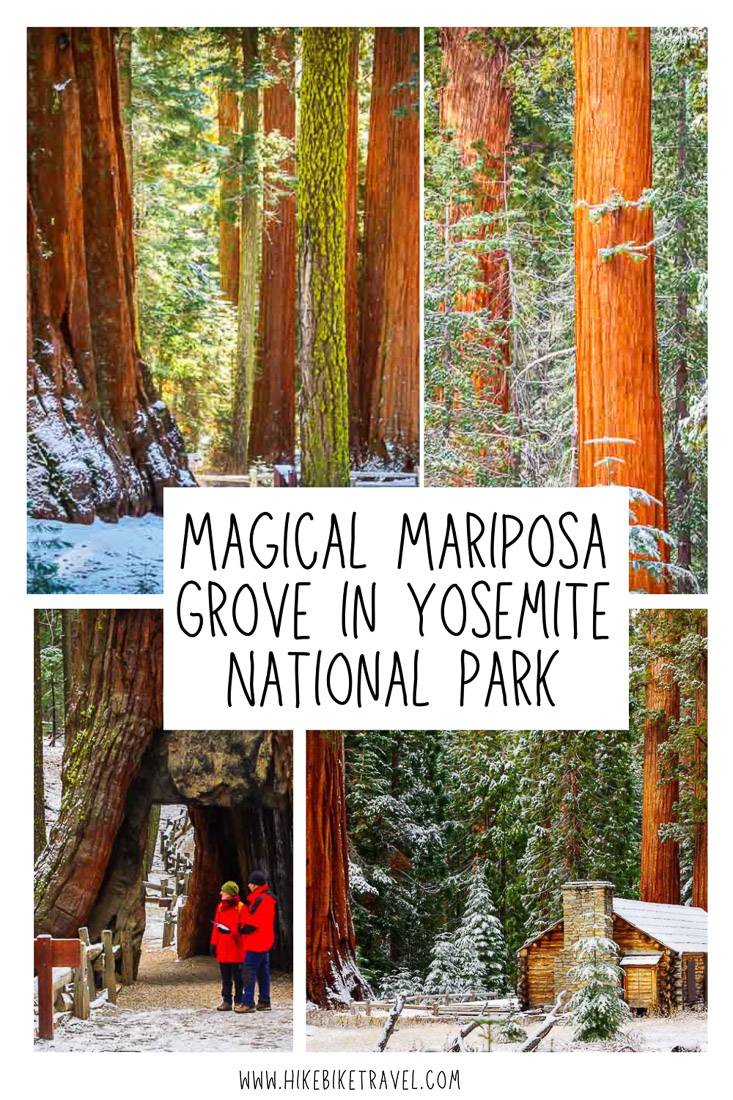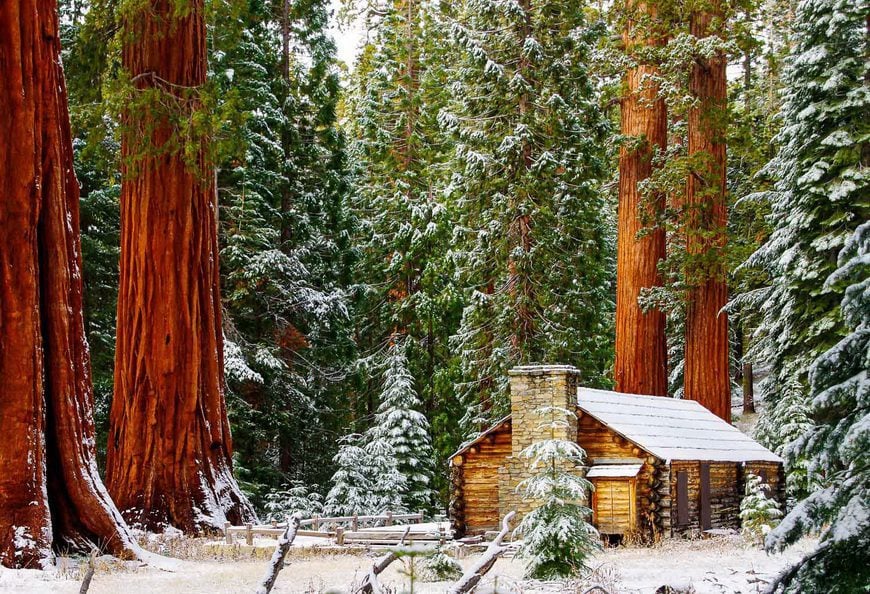A trip to see the giant sequoia trees in Yosemite National Park is bucket list worthy. While I have seen some big trees in my time – Cathedral Grove on the way to Tofino on Vancouver Island, Muir Woods near San Francisco, and true virgin forest in northwestern Ontario where few people have ever trod, the giant sequoia trees in Mariposa Grove, Yosemite are nothing short of mind-blowing.
Spend a few hours wandering through the Mariposa Grove of Giant Sequoias in the southern part of Yosemite National Park and you’ll feel like you’ve entered a magic kingdom – and it’s not the Disney version.
I’ve never seen a place quite like it.
This post includes some affiliate links. If you make a qualifying purchase through one of these links, I will receive a small percentage of the sale at no extra cost to you. Thank you very much for your support.
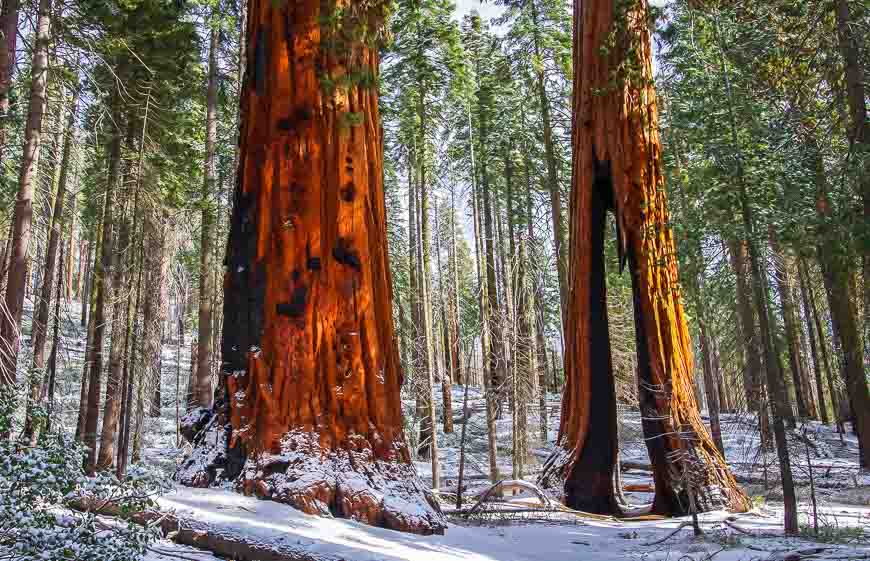
Sequoia trees in Yosemite useful information
Time needed: Allow at least two hours for a visit to Mariposa Grove. You may not want to leave.
Fees: There is an entrance fee to Yosemite National Park of $35 per car and the pass is good for a week.
Winter: In winter the road to Mariposa Grove is closed. You can ski or snowshoe into Mariposa Grove and then up on the trails to see the trees.
Facilities: There are restrooms at the Mariposa Grove Welcome Plaza.
Dogs: Leave your dog at home. Pets are not allowed on any roads or trails near Mariposa Grove.
Biking: You can bike on the Mariposa Grove Road – but only between the welcome plaza near the South Entrance and the Grizzly Giant – and only when the road is open for the season.
Museum: Note that it is closed in the off season.
Food/water: Bring snacks and water with you as there is no food for sale at the Mariposa Grove Welcome Plaza. There is drinking water available year round.
Nearby towns: There are a couple of nearby towns to stay in including Oakhurst and Mariposa. Mariposa is also a good town to position yourself for entrance to the Yosemite Valley.

Getting to Mariposa Grove
Look for a free shuttle at the Mariposa Grove Welcome Plaza near the south entrance to Mariposa Grove.
There are approximately 300 parking spots at the welcome plaza but they often fill up by late morning. The earlier you arrive the better so you increase your odds of getting a parking spot.
The dates for opening and closing of the road and the shuttle service vary from year to year depending on conditions,
Some years they can open as early as April 1st. The road is not usually open and the shuttle service doesn’t run between December and early April. The only people allowed to use the road are those with a disability placard.
Note that there is the option to hike to Mariposa Grove. It’s about 2 miles each way on the Washburn Trail or on the Mariposa Grove Road. Count on about 500 feet of elevation gain. There are several miles of trails in and around Mariposa grove. In winter, take a pair of icers or snowshoes, depending on conditions.
Shuttle hours in 2024
- April 1 – May 14: 8 AM – 7 PM ( the last bus leaves Mariposa Grove at 8 pm). Buses pick up approximately every 15 minutes.
- May 15 – September 7: 8 am to 7 pm (the last bus leaves Mariposa Grove at 8 pm). Buses pick up every 10 minutes.
- September 8 – November 7: 8 am to 5:30 pm (the last bus leaves Mariposa Grove at 6:30 pm). Buses pick up roughly every 10 minutes.
Giant sequoias in Yosemite – Mariposa Grove
The giant sequoias are the star of the Mariposa Grove in Yosemite National Park. You’ll find about 500 of them in the grove – their presence a testament to their ability to survive.
On average, mature sequoias have endured 100 wildfires in their lifetime. They are very resistant to disease and insects too.
There are two other areas in the park that also have giant sequoias – Tuolumne and Merced groves located off California Highway 120 near Wawona though they have nowhere near the numbers of trees in Mariposa Grove.
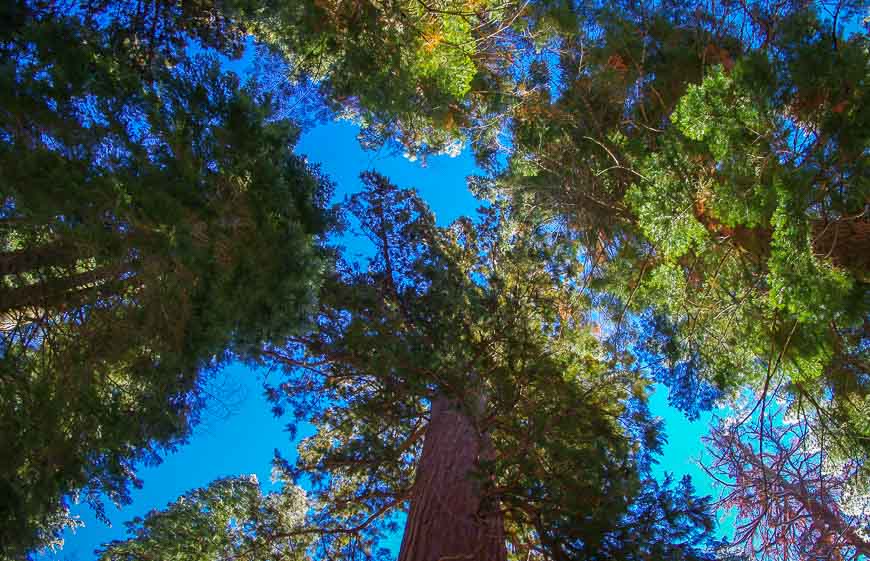
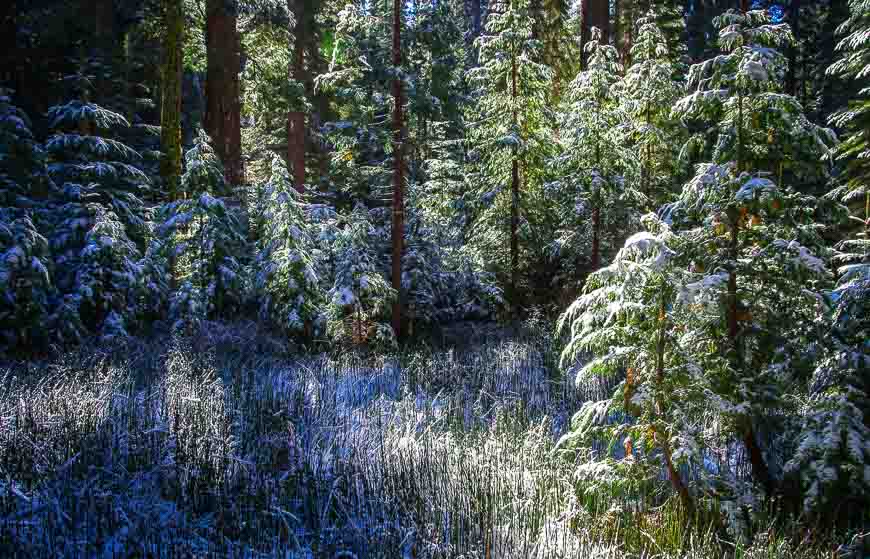
Interesting facts about the giant sequoia trees in Yosemite
Giant sequoia trees are the fastest growing trees in the world. They ONLY grow naturally in the Sierra Nevada mountain range of California.
Giant sequoias grow at elevations of around 6,500 feet
Some giant sequoias have survived upwards of 2,000 years.
The bark can be as much as four feet thick.
Coast redwood trees are taller but giant sequoias are bulkier and are the widest of all trees.
Giant sequoias need the dry heat of the mountains for the cones to open – and release their seeds. They reproduce by seed only.
It takes 20 years for a giant sequoia to mature and produce cones.
The largest tree in the world is a giant sequoia that goes by the name of General Sherman. At 275 feet tall, it weighs 2.7 million pounds.
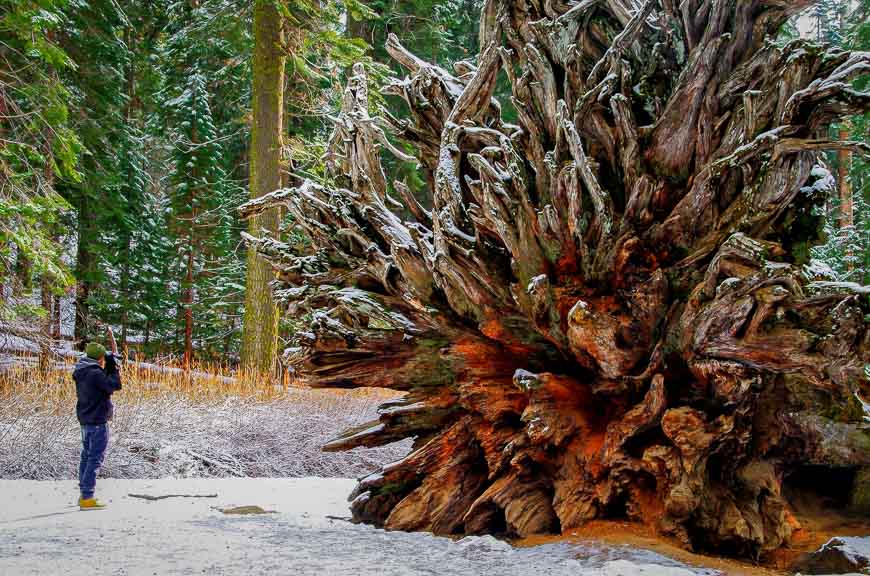
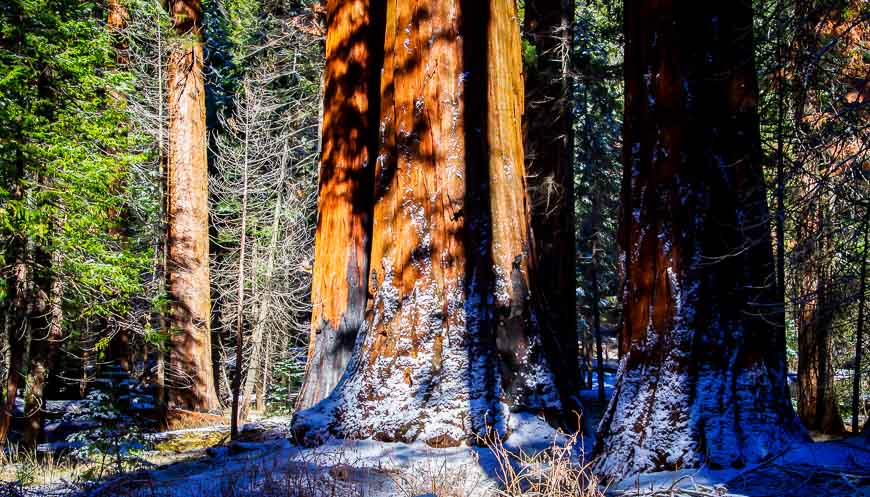
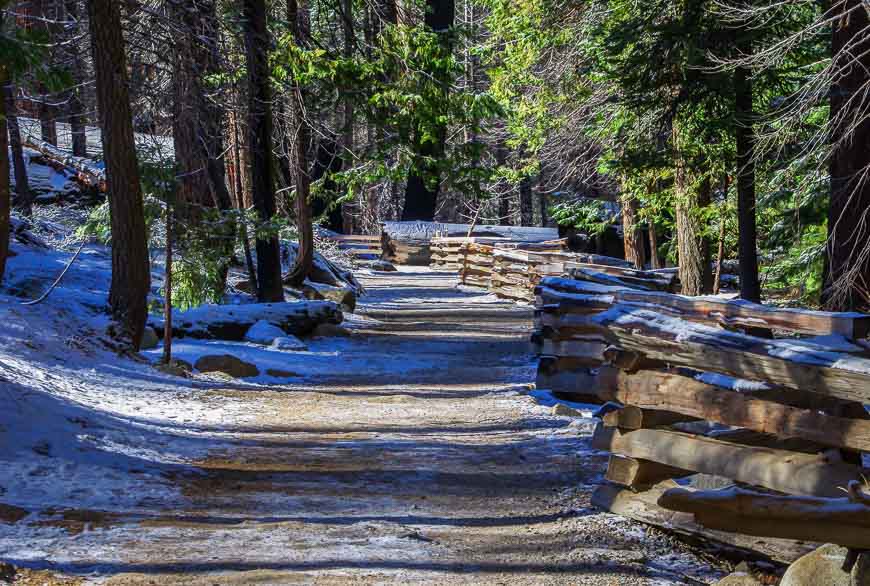
Famous sequoia trees in Yosemite National Park
The California Tunnel Tree was cut in 1895 to allow stagecoaches to drive through it. It is still alive.
The Grizzly Giant is one of the biggest trees in the park with limbs that boast a seven foot circumference. It is considered to be the 25th largest tree in the world standing 210 feet tall with a circumference at the base of 92 feet.
The Columbia Tree, a 285 foot tree located near the museum, is the tallest in the park.
It’s possible to walk inside the still living Telescope Tree and look up to the sky through the tree’s trunk.
The Wawona Tunnel Tree is no longer standing but until 1968 it was considered to be the most photographed tree in the world. Unfortunately it fell over with a heavy snowfall.
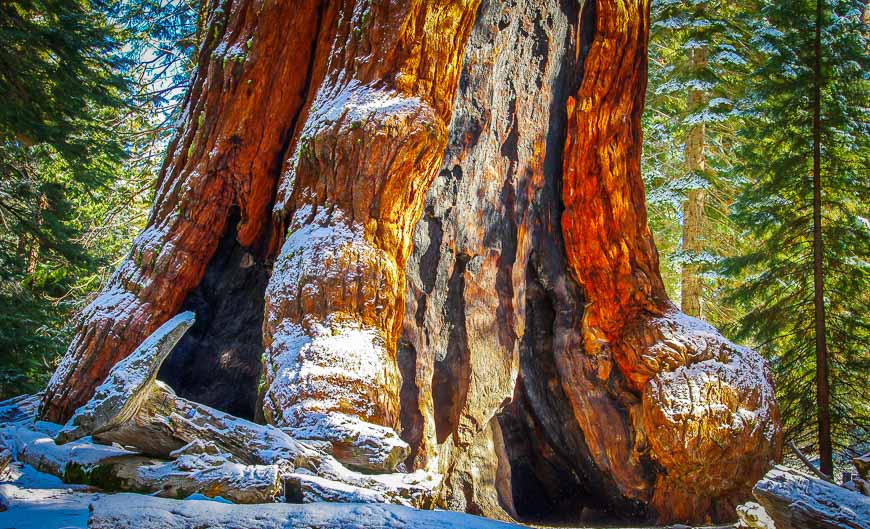
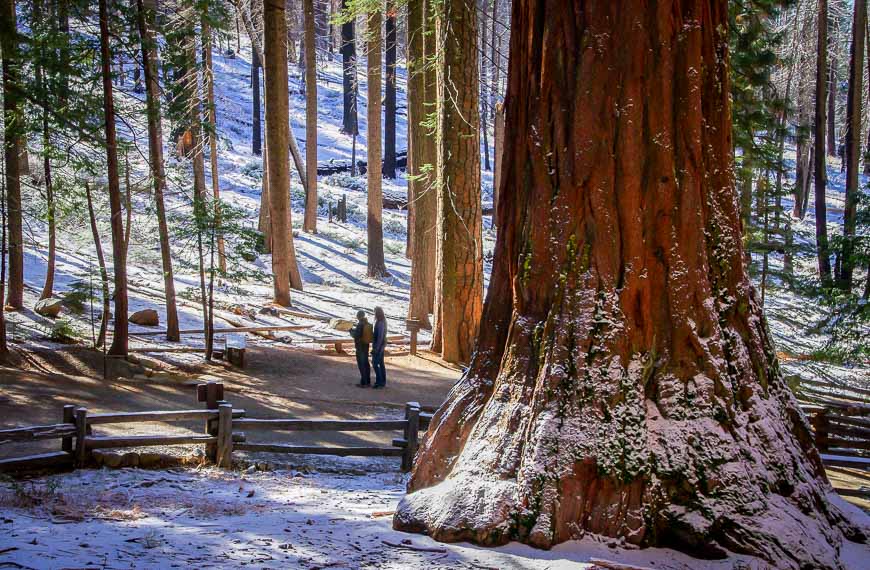
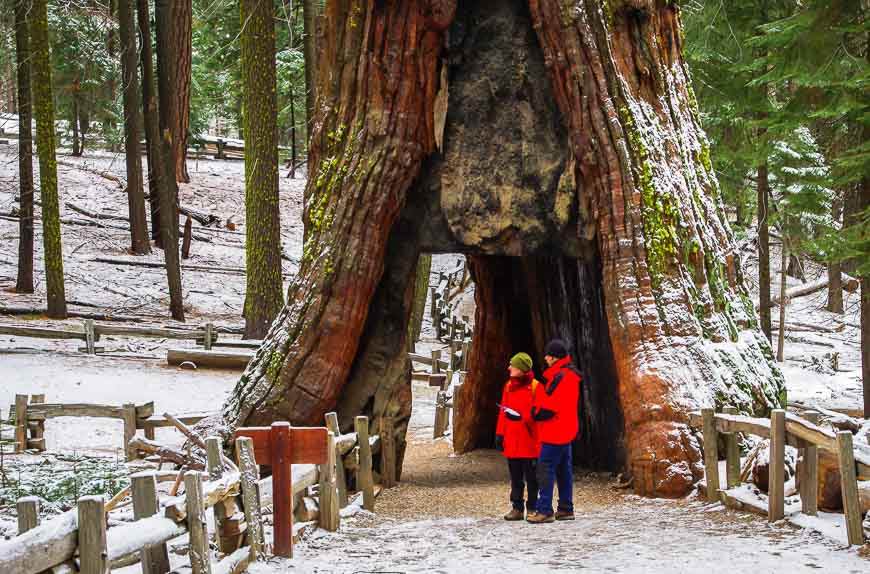
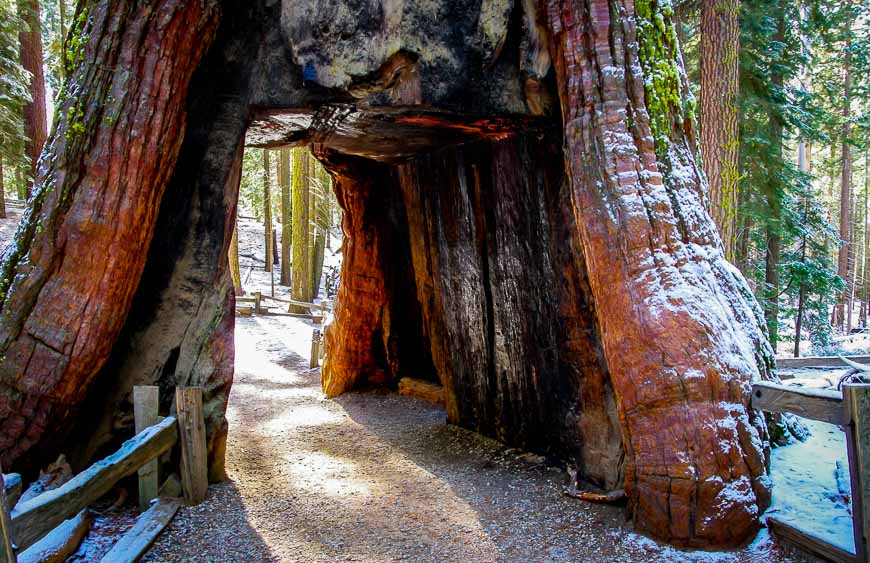
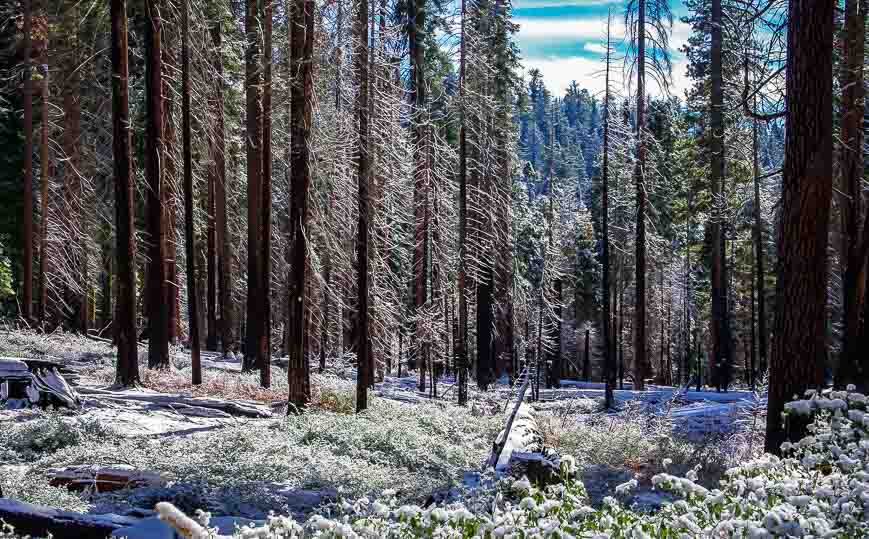
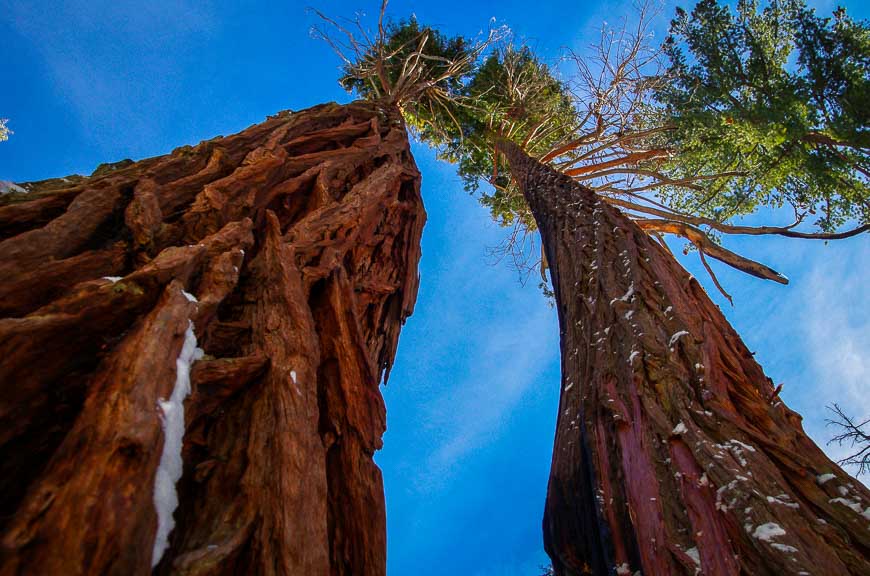
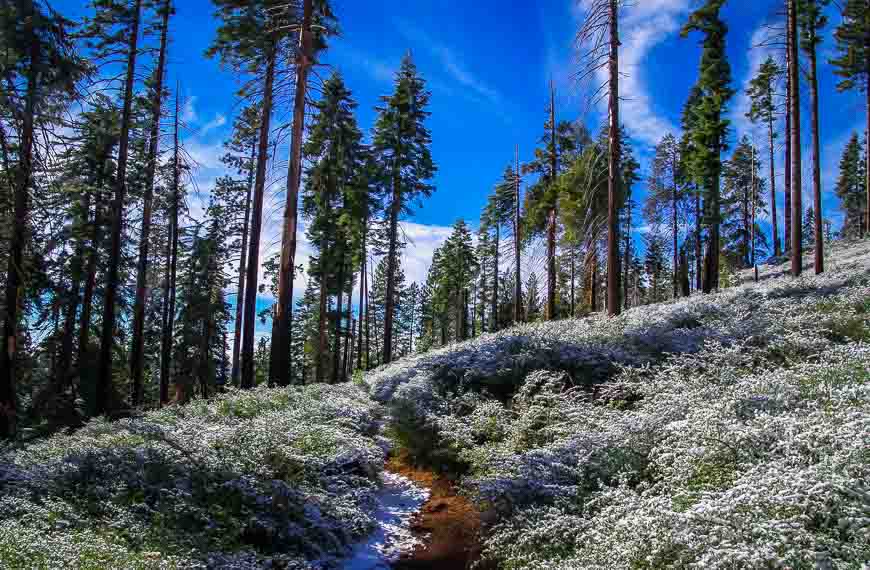
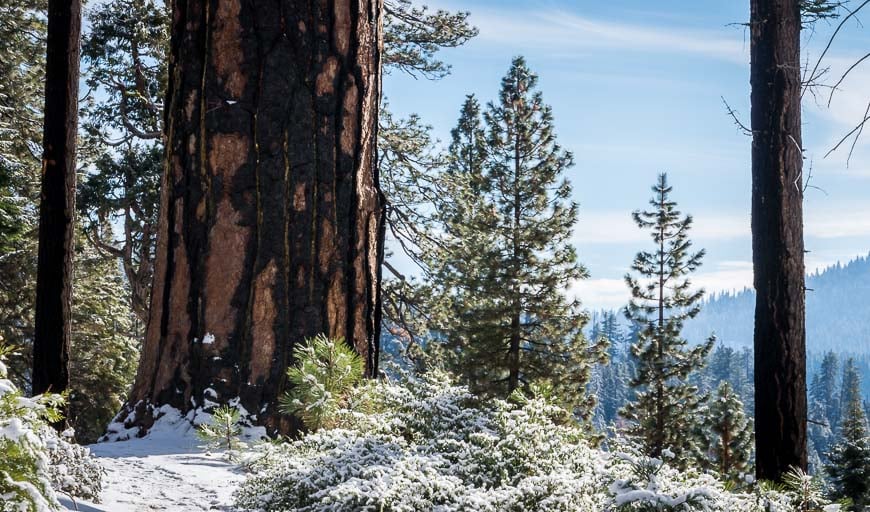
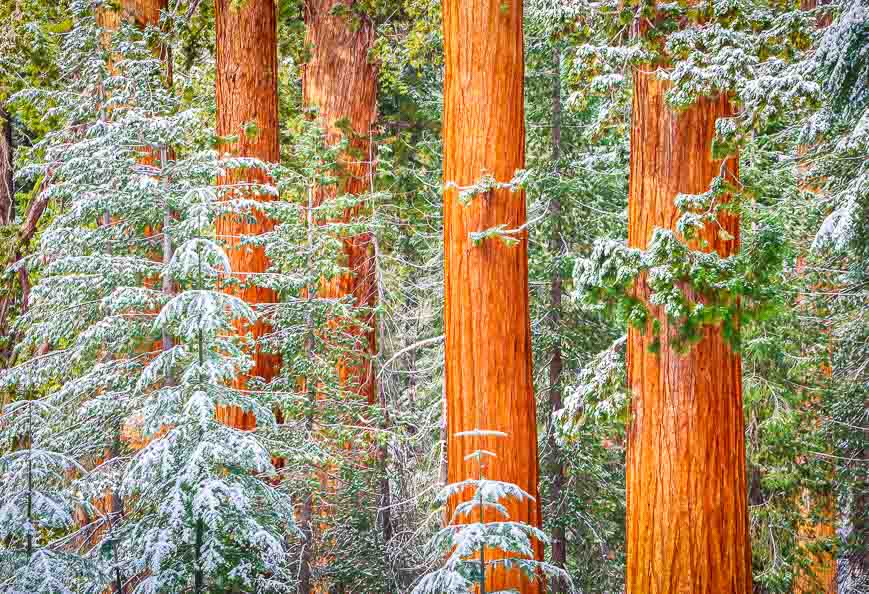
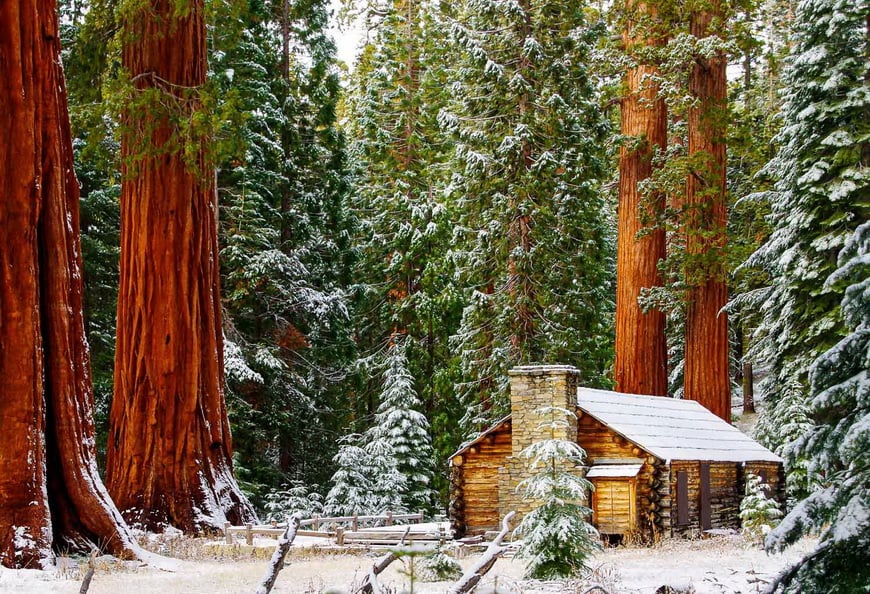
Hiking in Yosemite
I did my trip to Mariposa Grove in early December but Yosemite National Park is one where you’ll want to come back in summer to take advantage of all the incredible hiking.
Check out this great post to get the lowdown on day hikes (without the crowds) and activities in Yosemite along with some ideas of where to stay, including cabins, glamping tents, RV parks, and grand historic hotels.
Where to stay near Mariposa Grove
Fish Camp is only about a 12-minute drive from Mariposa Grove. You’ve got lots of choice here.
Big Creek Inn– rated superb, is within 3 km of Yosemite’s south entrance.Rock Front Lodge– also rated superb, is a holiday home if you have a crowd.
Tenaya Lodge at Yosemiteis rated very good.
Wawona is also nearby and has loads of properties – many that are holiday homes that are rates superb or exceptional.
Check out23A Big Cedar,95R The Little Creek Cabinor17A Longview. All are rated exceptional.
Location map of Mariposa Grove and the giant sequoia trees in Yosemite
Further reading on things to do in California
- 10 Fun Things to do in Mendocino, California
- Hiking in Palm Springs: The Three Must Do Hikes
- A Day Trip to Catalina Island – A World Away from LA
Click on the photo to bookmark to your Pinterest boards.
